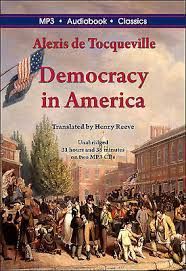The Specifics of Management of the Knowledge Worker
PUBLISHED:
Nowhere is management theory demanded more than in managing the knowledge worker, and yet nowhere is management theory more inadequate in addressing a field’s issues than in knowledge work. This is the point Peter Drucker posited in his work Management Challenges for the 21st Century (1991), and to resolve it he came up with six factors that determine the productivity of the management worker. Among these, his final point that management workers “must be treated as an ‘asset’ rather than a ‘cost’” by any given organization is an important concept1. While it only gradually emerged within management theory over the century, it is crucial for any employer and any government to understand and apply if they are to retain a competitive advantage going into the future.
Historically, management theory has been about improving the output of the worker through banal efficiency: how to increase the production of steel per head, how to increase the production of cars per hour, how to minimize deficient products, etc. In all these considerations, the worker is a disposable resource. When he is hired, he is set to a particular task that is typically repetitive and thus easily taught, and when he is not needed because of shortcomings in his work, company difficulties, or automation, he is laid off. Referred to as “dumb oxen”, workers were seen in management theory as machines to have productivity squeezed out of.
The shift from a majority manufacturing to service-based economy during the first half of the twentieth century changed this dynamic to some extent. The American postwar economic boom introduced the office worker as a common source of employment. This trend continued throughout the conglomerate era of the 1960s and was helped by the decline of the American manufacturing industry in the 1970s.
Now in a stage dominated by service and knowledge work, the American economy must approach management differently. The aforementioned cost-asset shift is a demonstration of why this is so, as Drucker’s emphasis on the knowledge worker’s autonomy means that they wield control, not only within their job but over who they should work for as well. This in addition to the high-capital nature of knowledge workers means that the old management theory approach to labor as disposable will backfire catastrophically for any company that tries it with their knowledge workers.
It is also important to remember the demographic trends of the United States, and more so the world, in considering why the cost-asset shift is vital. For all of human history until some fifty years ago, population was considered to be in tandem with economic power, given larger populations yielded larger labor forces and consumer markets. Economic growth was thus also correlated with population growth, demonstrated by the historic development of Europe and the United States and the more recent examples of the developing world. Consequently, the worldwide decline in fertility rates, and the decline in population numbers in some developed countries, signals economic decline for the future. In the labor market, smaller populations mean fewer jobs that produce for and service fewer people. Although the knowledge worker has grown in proportion to the total labor market, these demographic declines will affect knowledge workers as well, meaning employers will have a vested interest in retaining their high-capital labor. To enforce this, the cost-asset shift will have to come into play.
The wants and needs of the knowledge worker pose a unique challenge in the field of management. Autonomy, for the first time, can be regarded as a significant factor affecting all other aspects of this labor base. What good does a large salary provide a knowledge worker if they don’t feel that they are welcome at an institution? How would they perceive that their work is not being directed towards productive pursuits at their corporation, especially given the brain work and dedication given to it? Of course, the fruits of one’s labor has been a contentious issue in management ever since compensation and workers’ rights became a universal constant with the Industrial Revolution, but this is augmented by the knowledge worker’s particular method of generating value. Given that Drucker poses their largest asset and source of value as their own mind, they will intrinsically have a special attachment to their work almost as their brainchild.
Incentivizing the knowledge worker is also only one part of this picture. Per Drucker, the knowledge worker’s labor does not follow the linear relationship between quantity invested and returned. The elaborate nature of knowledge work makes it heavily dependent upon synergy: the right combination of talent can grow an organization by leaps and bounds, while virtually incompatible teams or partnerships can render all potential talent useless. And the human capital cost of the knowledge worker, both in their parents and the state educating them and in cost to their employers, is astronomical compared to all previous kinds of labor.
In conclusion, the needs and wants of the knowledge worker must be met adequately, especially in the field of management. Management must almost undergo a revolution to adapt to this novel challenge, for the knowledge worker is the future of economic productivity in the developed world. Those employers that successfully accommodate the demands of this class of talent will eventually reign over those that do not accept that this is the direction economic productivity is headed.
References
Drucker, P. F. (1991) Management Challenges for the 21st Century. Harper Business.





